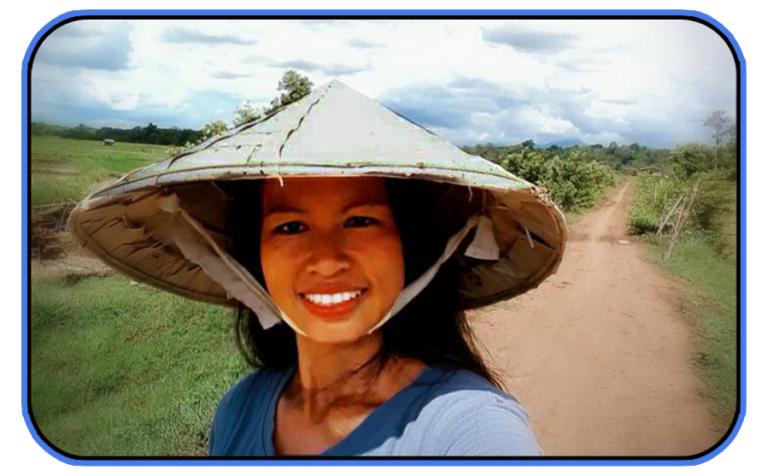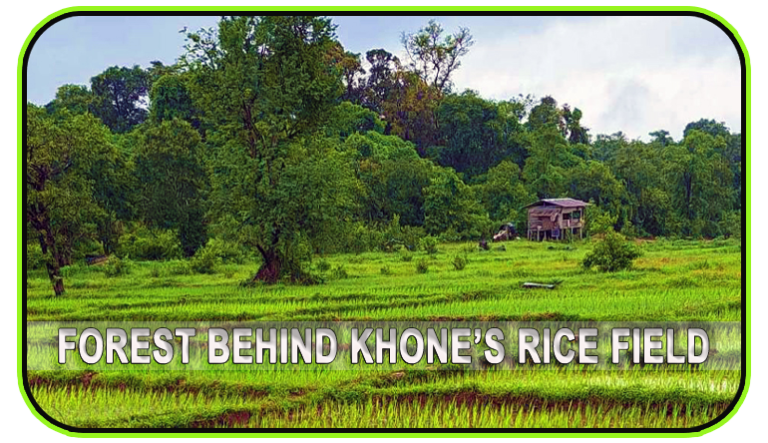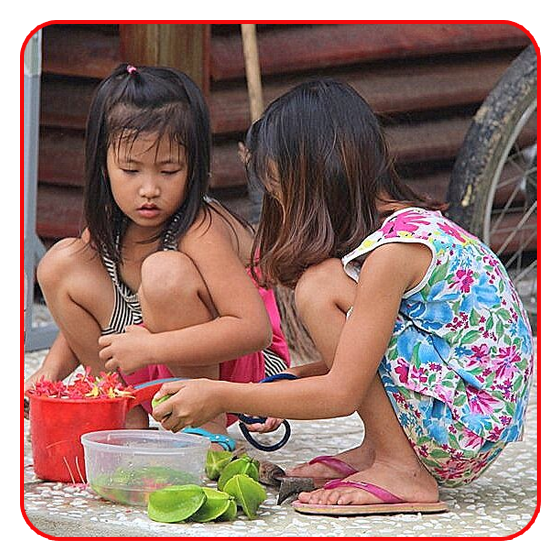
A LIFE I LOVE
I’m still learning about the significant cultural differences between living in rural Lao and America. This transition is made much easier by the helpful direction from the entire community. Their understanding nature has made this possible.
Khone Keo Panya, is a native of Kengmaihia village and she is my friend, caregiver, teacher and companion. She is the only English speaker in the village. Living in the Isan areas of Thailand for many years has taught me a few words that are shared in common with the Lao language.
I have no aspirations of ever being fluent in the Lao language. Learning a tonal language is near impossible for tone deaf persons. This is the official explanation of the Isan language as provided on Google. “As a variety of the Lao language, Isan belongs to the Southwestern branch of Tai languages in the Kra-Dai language family”.
The communities social culture could be described by a single word, “practicality”. It can be called common sense and has to do with what’s the most efficient and suitable way to achieve the desired goal. I have many examples to point to that explain their extreme practicality.
Birthdays are not a reason to be celebrated. Villagers usually have large families and give birth at home. Village mothers and grandmothers act as doulas (an untrained midwife) in the delivery. Birthdates are not officially recorded, the order in which the newborns arrive compared to their siblings is remembered.
Western culture places great emphasis on planning for the future and can become obsessive, leading to psychological and emotional problems. Following critical path thinking is not something given much thought here, a more day to day approach in life style is the most practical in this culture. This attitude along with the Buddhist tenets and the esteem given to the village monks, seems to lead to a calmness and spiritual happiness.
The social pleasantries of a simple greeting to all with a slight bow (when you bow to someone, you briefly bend your body toward them as a formal way of greeting them or showing respect). Raising your hands together to your face at the same time with a smile and the words Sabaidee, meaning “Hello, Good day or Goodbye”. This formal type of greeting, displays an action of kindness and acceptance to all.
A characteristic that seems to be present in all is hard work. The community joins together (men, women and children) to provide the labor in planting, caring for and harvesting the food staple of “sticky rice”. This is shared to all, so even the oldest and poorest of the community have a year long food supply. Families join together in these activities and it’s almost like a party, with food, talk and smiling faces at the end of the day.
An astute knowledge of the forests surrounding the village is key to foraging and gathering. Women and children don a miners type of flashlight to their foreheads after dark. Experience has taught them what is available at any time of the year. Snails, frogs, insects, wild fruits, vegetables and a variety of mushrooms are all gathered nearly every late evening. Another social event and a pleasurable activity for the participants. Khone provides these gathered foods to the elderly most everyday.
Khone herself has no formal education. Although self taught and able to speak, read and write English to some degree, she still has trouble in writing in Lao. She was a mid-aged adult before ever visiting a doctor or dentist. Many of the older villagers have never been beyond the village or have ever sought medical attention.


The most amazing part of this story is the number of old people still living in the village. Many of which are figured to exceed 100 years. Khone knows them all and based on memorable world events, she is able to ascertain close estimates of actual age. With only the recent addition of viable transportation and roads, many of these octogenarians and beyond have never left the village. “OBSERVATIONS FROM LIFE TO BETTER HEALTH”. I believe some of the reasons responsible for their extended life could be attributed to a simple life. No packaged foods, no fertilizers or chemicals and no worries about their future well being.